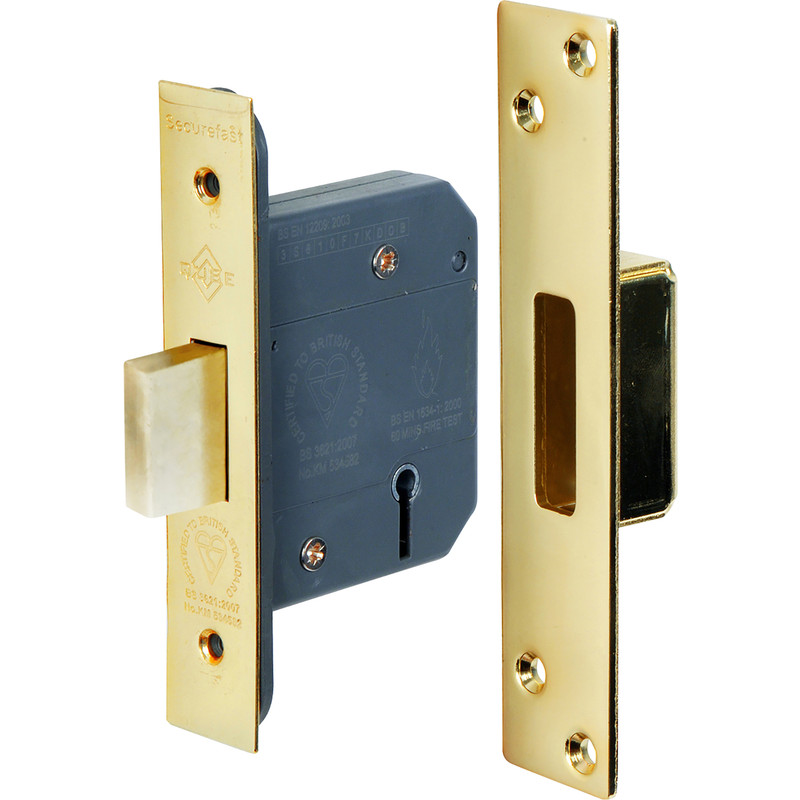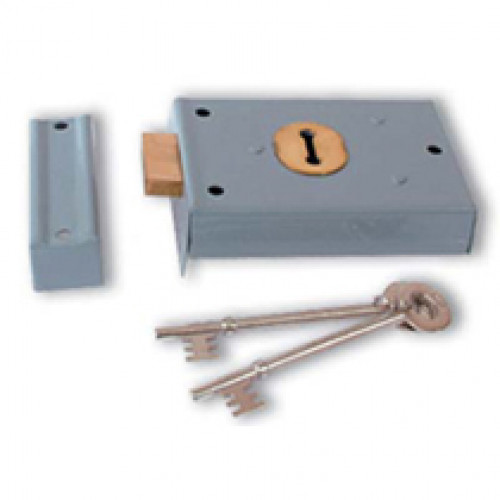
Keyed padlocks alone are available in different subtypes, like keyed alike, keyed different and keyable.

Padlocks come in a variety of models that are grouped into two main categories: keyed and combination. They are portable, meaning unlike other lock types, they are not permanently attached to a door or anything that uses it. Padlocks belong in the free-standing lock group. This type of deadbolt provides the greatest flexibility and security. A single, double and lockable thumb-turn deadbolt features a thumb-turn inside that can be locked with a key. A double-cylinder deadbolt can be used with a key from both sides. Single-cylinder deadbolts are the simplest ones and can be activated from one side via a key. Deadbolt locks come in three types: single, double and C. They cannot be opened with a knife or hand tool. Deadbolts feature a unique locking mechanism that resists physical attacks, battering and boring. Lock bolts are moved by turning a knob or key without the use of a spring. Cam locks use various tailpieces or “cams” to create a locking mechanism.ĭeadbolts offer the best protection against burglary or break-ins. Certain cam locks secure cabinet doors completely, which makes them attractive measures for keeping sensitive materials. A metal tube with a hole in one side helps position the bolt that is inserted. These types of door locks are cylindrical and are situated in the wooden part. Cam locks usually come with sets of furniture and cabinet kits. They are for the most part invisible in fully constructed cabinets. Thus, knob locks should not be used on external doors, as they can be broken into with basic tools like a hammer or wrench.Ĭam locks are a type of fastener that allows storage to be kept intact and do so in a latent way, so as to not affect the overall appearance. The lock cylinder is located in the knob instead of the door. Knob locks are the most common type of door lock and the chief method of security for most doors. What are the different types of Door Locks? Our range covers the most important types of door locks for both internal and external use, from some of the leading and most well-known brands on the market.

#Deadlock lock install
Some are fitted inside the door itself which may require some carpentry work to install whereas others can be simply screwed to the inside with the adjacent part. Each door lock offers unique functionality, therefore it's important to choose the right type of lock for your door. Kitemarked and "certifire" approved products are also stocked in this range, meaning the products you have to choose from have been tested to the highest standards.ĭoor locks are absolutely essential in keeping your home safe and secure when you are both in and out of the house. Insurance-approved products are available and many with multiple keys. I’m also available for consulting if you just don’t have time for that and need to solve performance problems quickly.About Our Door Locks What Door Locks does Champion Timber offer?Īt Champion Timber, we can offer you a comprehensive range of Door Locks & Bolts, ideal security options for uPVC and wooden doors, home or industrial, for use internally or externally, whether you are looking for privacy around the home or enhanced defence against a break-in & theft for your properties. I’m offering a 75% discount on to my blog readers if you click from here. If this is the kind of SQL Server stuff you love learning about, you’ll love my training. The big question is: are you better off doing this in T-SQL than in your application? Waiting ~5 seconds (I know I’m simplifying here, and the deadlock monitor will wake up more frequently after it detects one) Normally when a deadlock occurs, one query throws an error, and there’s no attempt to try it again (unless a user is sitting there hitting submit until something works). This is a better pattern than just hitting a deadlock, or just waiting for a deadlock to retry. The catch block is set up to break if we hit an error other than 1222, which is what gets thrown when a lock request times out. While 5 milliseconds is maybe an unreasonably short time to wait for a lock, I’d rather you start low and go high if you’re trying this at home. WAITFOR DELAY '00:00:01.000' /*Wait a second and try again*/ WHILE 1222 /*Lock request time out period exceeded.*/ Different LocksĪn alternative is to set a lock timeout that’s shorter than five seconds.

#Deadlock lock full
The problem that may arise is when the deadlock monitor takes a full 5 seconds to catch a query, which can block other queries, and may generally make things feel slower. I’ll sometimes see people implement retry logic to catch deadlocks, which isn’t a terrible idea by itself.


 0 kommentar(er)
0 kommentar(er)
